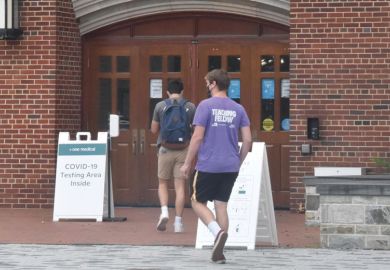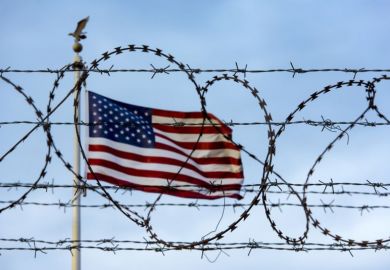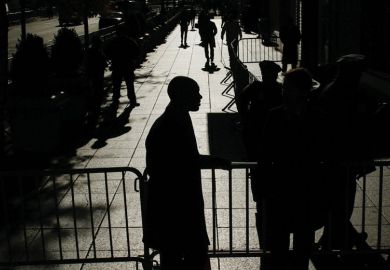The Trump administration is moving to impose a series of new restrictions on international students in the US, including a general limit of four years on most visas and half that long for many African and Middle Eastern nationals.
The rules, which could take effect as early as the spring semester, also would reduce student flexibility in areas that include English-language instruction, changes in majors, low grades and retaking courses.
The US Department of Homeland Security said that the pending rules, giving it new authority to assess academic progress, would boost national security and visa programme integrity.
The goals, the agency’s second-ranking official, Ken Cuccinelli, said in its announcement, include “preventing foreign adversaries from exploiting the country’s education environment”.
A range of US higher education leaders, however, condemned the move as the latest in a series of Trump administration actions that threaten the nation’s world-leading rate of overseas student enrolment.
The 1 million foreign students at US institutions provide the country with more than $40 billion (£30 billion) in annual direct spending, and immeasurable future value in job creation, research innovation and global political influence, various studies have concluded.
“It’s unclear why we would want to stop that,” said Sarah Spreitzer, director of government relations at the American Council on Education, the main US higher education lobby group.
Current US visa policy generally lets foreign students remain in the country as long as they are studying at a recognised institution.
The new limit is less than the four-and-a-half years it takes the average student to finish a bachelor’s degree, Ms Spreitzer said.
“We were a little surprised by how restrictive it is,” even for an administration that has taken repeated action against foreigners and overseas students, she said of the policy.
The most optimistic aspect of the proposal, several experts said, is that the Trump administration spent two years drafting it, possibly leaving it too little time for implementation if the administration is voted out of office in November.
The policy now goes through a mandatory month-long process of collecting public comment, after which the administration is required to formally respond to the suggestions, before it can proceed to final implementation.
If made effective for the spring semester, Ms Spreitzer said, international students weighing a US college would risk investing four years on their education and leaving with no degree if they cannot finish on time. Students could apply for a renewal, but that’s a complicated option with no guarantee of success, she said.
Slightly more than half of foreign students at US colleges finish within four years, which is a rate nearly 10 percentage points higher than that of US students, she said.
Along with the general four-year visa limit, students born in one of 43 nations from which at least 10 per cent of their citizens historically overstay their student visas, or in one of four countries the US labels sponsors of terrorism, would be allowed only two-year visas.
Other visa limits in the 256-page regulation include setting a two-year lifetime limit on English language training, and halving the 60-day period to leave the US after finishing a course of study or an authorised post-degree work programme.
The regulation also would give the Department of Homeland Security the authority to revoke visa authority for various academic-related problems it assesses, such as low grades or other signs of poor progress.
The move comes as US colleges were already seeing their lead in global attractiveness to foreign students get whittled away during the Trump administration.
Last year the Institute of International Education reported three straight years of declines in new foreign student enrolment at US institutions, and the National Student Clearinghouse recently reported an 11 per cent drop in foreign student enrolment this autumn amid the coronavirus pandemic and related travel limits.
Register to continue
Why register?
- Registration is free and only takes a moment
- Once registered, you can read 3 articles a month
- Sign up for our newsletter
Subscribe
Or subscribe for unlimited access to:
- Unlimited access to news, views, insights & reviews
- Digital editions
- Digital access to THE’s university and college rankings analysis
Already registered or a current subscriber?








